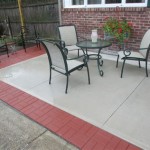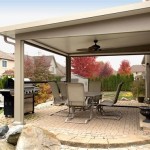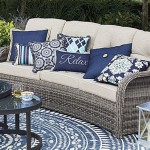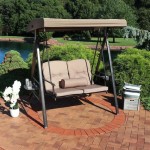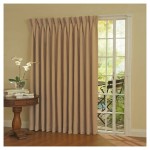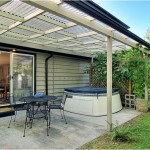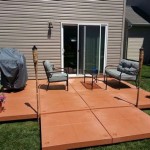Creating Shade For Your Patio: A Comprehensive Guide
Patios serve as extensions of living spaces, offering opportunities for relaxation, entertainment, and connection with the outdoors. However, prolonged exposure to direct sunlight can render patios uncomfortable and even unusable, particularly during peak summer months. Effective shade solutions are crucial for maximizing the enjoyment and functionality of these outdoor areas. This article provides a comprehensive overview of various methods for creating shade on patios, encompassing both temporary and permanent options, along with considerations for materials, aesthetics, and installation.
Selecting the appropriate shade solution involves evaluating several factors, including the size of the patio, the intensity of sunlight exposure, the desired level of shade, the budget, and the overall aesthetic of the outdoor space. A well-chosen shade solution not only provides protection from the sun but also enhances the visual appeal and ambiance of the patio.
Understanding the Benefits of Patio Shade
Beyond simply blocking sunlight, patio shade offers a multitude of advantages. One primary benefit is temperature regulation. Shade can significantly reduce the surface temperature of the patio, making it more comfortable to walk on and sit on. This is particularly important for patios made of materials that readily absorb heat, such as concrete or stone.
Another significant benefit is protection from harmful ultraviolet (UV) rays. Prolonged exposure to UV rays can lead to sunburn, premature aging, and an increased risk of skin cancer. Patio shade provides a barrier against these harmful rays, allowing individuals to enjoy the outdoors with greater safety and peace of mind.
Furthermore, shade can contribute to energy efficiency. By reducing the amount of direct sunlight that enters the home through patio doors or windows, shade can help to lower indoor temperatures and reduce the need for air conditioning, resulting in lower energy bills. This is especially relevant for patios located on the south or west sides of a house, which typically receive the most intense sunlight.
Finally, privacy enhancement is another key advantage. Strategic placement of shade structures can create a more secluded and intimate outdoor space, shielding the patio from the view of neighbors or passersby. This is particularly important in densely populated areas where privacy is often limited.
Exploring Temporary Shade Solutions
Temporary shade solutions offer flexibility and versatility, allowing individuals to adjust the amount of shade as needed and to easily remove the shade structure during the off-season. These options are often more affordable and easier to install than permanent solutions.
One popular temporary solution is the patio umbrella. Patio umbrellas are available in a wide range of sizes, shapes, and colors, and they can be easily moved and adjusted to provide shade where it is needed most. Freestanding umbrellas are supported by a base, while market umbrellas are designed to be inserted into a table with an umbrella hole. Cantilever umbrellas, also known as offset umbrellas, offer a unique design with the canopy suspended from a frame that is offset from the base, providing shade without the obstruction of a central pole.
Another common temporary solution is a shade sail. Shade sails are fabric canopies that are stretched and secured between multiple anchor points, creating a visually appealing and effective shade structure. Shade sails are available in various shapes and sizes, including triangles, squares, and rectangles, and they can be customized to fit specific patio dimensions. Properly installed shade sails provide excellent UV protection and can withstand moderate winds.
Pop-up canopies offer another quick and easy temporary shade option. These canopies typically consist of a lightweight frame and a fabric canopy that can be easily erected and dismantled. Pop-up canopies are ideal for temporary events, such as parties or barbecues, but they may not be as durable or weather-resistant as other shade solutions.
Portable pergolas represent a more substantial temporary shade alternative. These structures, often made of wood or metal, can be freestanding or wheeled for easy relocation. They typically feature a lattice roof that can be covered with fabric or climbing plants to provide shade.
Considering Permanent Shade Structures
Permanent shade structures offer a more durable and long-lasting solution for patio shade. While they typically require more planning and installation effort, they provide a stable and reliable source of shade for years to come. Permanent shade structures often increase the property value.
A traditional pergola is a classic choice for creating permanent shade on a patio. Pergolas consist of vertical posts and horizontal beams, creating an open framework that can be covered with climbing plants or fabric for added shade. Pergolas can be constructed from a variety of materials, including wood, metal, and vinyl, and they can be customized to match the architectural style of the home.
Awnings provide another permanent shade solution. Awnings are fabric or metal coverings that are attached to the side of a building, extending over the patio to provide shade. Retractable awnings offer the flexibility to adjust the amount of shade as needed, while fixed awnings provide a consistent level of shade. Awnings can be manually operated or motorized for added convenience.
Patio covers, often constructed of aluminum or polycarbonate, offer a more substantial and weather-resistant shade solution. Patio covers provide complete protection from the sun and rain, allowing the patio to be used year-round. These structures are typically attached to the house and can be designed to match the existing roofline.
Building a sunroom or screened-in porch represents the most enclosed and permanent option. While more costly and involved in terms of construction, these options effectively create an entirely new outdoor living space shielded from sun, rain, and insects. These structures often require permits and adherence to local building codes.
Material Choices and Considerations
The choice of materials for patio shade structures depends on factors such as durability, aesthetics, budget, and maintenance requirements. Wood is a popular choice for pergolas and other shade structures, offering a natural and aesthetically pleasing look. However, wood requires regular maintenance to prevent rot and insect damage. Treated lumber, such as cedar or redwood, is more resistant to these problems.
Metal, such as aluminum or steel, offers a more durable and low-maintenance option for shade structures. Metal frames are resistant to rot, insect damage, and fire, and they can be powder-coated for added protection and aesthetic appeal. Aluminum is lightweight and rust-resistant, while steel is stronger and more durable.
Fabric is commonly used for shade sails, awnings, and patio umbrellas. Shade fabrics are typically made from durable, UV-resistant materials such as acrylic, polyester, or vinyl. These fabrics are available in a wide range of colors and patterns, and they can be treated to be water-resistant or waterproof.
Polycarbonate is a durable and lightweight plastic material that is often used for patio covers. Polycarbonate panels are impact-resistant and UV-resistant, and they can be tinted to reduce glare and heat. Polycarbonate is also relatively easy to clean and maintain.
Installation and Maintenance
The installation of patio shade structures can range from simple DIY projects to complex professional installations. Temporary shade solutions, such as patio umbrellas and shade sails, can typically be installed by homeowners with basic tools and skills. However, permanent shade structures, such as pergolas and awnings, often require professional installation to ensure proper structural integrity and adherence to building codes.
Proper maintenance is essential for prolonging the lifespan of patio shade structures. Wood structures should be regularly inspected for rot and insect damage and treated with a sealant or stain as needed. Metal structures should be cleaned periodically to remove dirt and debris, and any rust spots should be treated promptly. Fabric shade structures should be cleaned regularly to prevent mildew and fading, and they should be stored properly during the off-season.
In regions with heavy snow or strong winds, it is important to take precautions to protect patio shade structures from damage. Temporary shade solutions should be removed and stored during severe weather events. Permanent shade structures should be designed to withstand local wind and snow loads, and they should be inspected regularly for signs of damage. Pruning climbing plants regularly on pergolas can prevent excessive weight build-up that can cause structural damage in heavy snow.

Easy Ways To Create Shade For Your Patio The District
:max_bytes(150000):strip_icc()/thecreatedhome-87c8d7a90263457d9992c3fc5886c759.jpg?strip=all)
26 Budget Diy Backyard Shade Ideas

Easy Ways To Create Shade For Your Deck Or Patio

How To Create Backyard Shade Rectractableawnings Com

Patio Cover Ideas The Home Depot

Patio Cover Ideas The Home Depot

Easy Ways To Create Shade For Your Deck Or Patio

25 Best Patio Cover Ideas Covered Designs
:max_bytes(150000):strip_icc()/catzinthekitchen-4e8883e4e81e44a0ba9115b9e05c3f1c.jpg?strip=all)
26 Budget Diy Backyard Shade Ideas

Sun Shade Considerations For Your Patio
Related Posts

